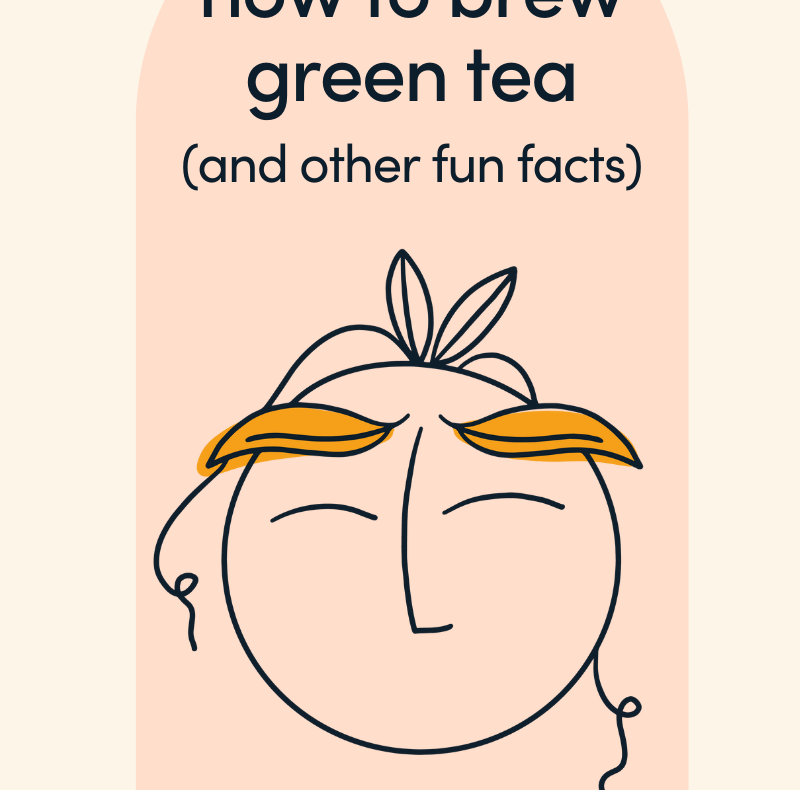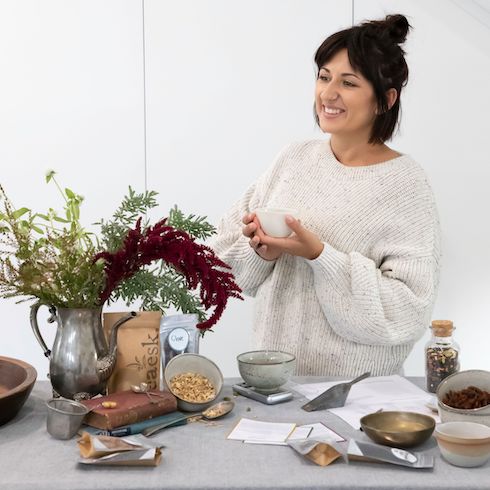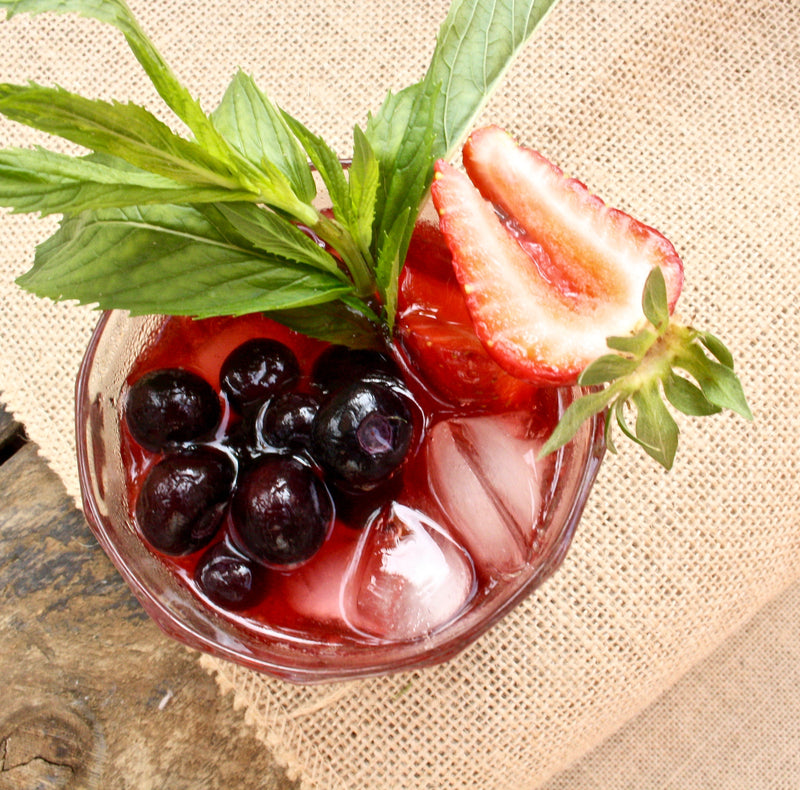
How To Brew The Perfect Cup Of Tea
I will be the first one to put my hand up, in admitting that yes once upon a time I was a careless tea maker who used boiling water and paid no attention to steeping time, for any tea I made for myself or guests. If I knew then what I know now, I would be totally embarrassed serving any tea that was undrinkable. I was often left puzzled as to why my tea always tasted offensively bitter and astringent. I'm positive most of you know what I'm talking about, especially if you have ever had green.
I bring you good news; I am here to help take the bitterness out of your cup (nobody has time for that) and to shed some light on how you can brew the perfect cup at home, that will make your tea drinking experience a more enjoyable one.
Below you'll find tips and guides to brewing different types of tea.
I would like to point out that however you fancy your tea comes down to personal taste; I am sharing guidelines on what I feel is important to ensure that you have consistency and able to savor this old world beverage to it's full potential. I also recommend using this guide with good quality loose leaf tea.
Tea is the second most-consumed beverage after water; apart from using good quality fresh tea leaves there are four important elements to remember when brewing tea.
- Quality of water
- Amount of tea used
- Temperature
- Steep time
WATER
In China, there is an old proverb “Water is the mother of tea”, suggesting the type of water you choose can make or break your tea drinking experience. Brewed tea is 99 percent water, so it is vital to use odour-free water that is as untreated as possible for a great tasting cup.
Here in Australia, we are spoilt for choice with bottled water and very fortunate to have clean running water from our taps. Unfortunately, in most households tap water contains too much chlorine, which is a real destroyer to your tea, altering its taste and ruins complex flavours and aromas. In some cases, high amounts of minerals present can result in “hard” water that may result in adding nasty metallic tastes to your tea. Complete opposite, pure water like distilled that doesn’t have enough minerals and oxygen that can leave your tea flat and lifeless.
I don't want to say that tap water shouldn't be used, and by no means am I a scientist; rather I am suggesting that there are other water sources to use that can enhance your tea experience. Cold fresh spring water is the purest and best kind to use. But let’s face it, most of us don’t have natural springs running through our back yards (wishful thinking), so filtered or bottled spring water is the next best thing.
FILTERED WATER
Filters are an excellent appliance to invest in as they should provide consistent, high-quality water. They can remove sediments, chlorine, and impurities from your tap water, allowing for a ‘cleaner’ taste so that tea's true characteristics and subtle aromas can shine through.
BOTTLED SPRING WATER
Bottled spring water should contain a neutral PH balance and a healthy amount of nutrients, minerals and oxygen to brew a delicious cup of tea. If bottled water is to become your preference, I would recommend comparing two or three against each other to see which suits you and your tea best.
The bottom line is, that no matter how great your tea leaves are or how amazing your teapot is if you use poor quality water it will result in a poor tasting tea.
AMOUNT OF TEA USED
Something as simple as adding too much or not enough tea leaves can alter the way your brewed tea tastes. This topic has been debated many times on what the universal standard for tea to cup ratio should be, this is for Western style brewing. The conclusion is two grams of tea per 250ml of water –one teaspoon. It is a great guideline to follow; however, I do believe this also comes down to personal taste.
Sometimes measuring becomes tricky as tea comes in all different sizes as does tableware teaspoons. If you want to have more control on consistency, I would recommend using a measuring spoon used for cooking purposes as a guide and stick to using that one spoon. From there you can decide whether to add more or less for your perfect cup. Or you can become really professional and weigh your tea.
A good rule of thumb is that the more "leafy" the tea- Oolong tea, the more you will have to use as they tend to produce a lighter brew. Smaller cut leaves like an English breakfast will infuse much quicker emanating in a stronger brew; therefore, the opposite applies.
TEMPERATURE
Temperature is vital when making the perfect cup of tea, and where most of us go wrong. You could have the finest tea leaves, and followed all the above steps, but if you choose the incorrect temperature, some tea will be burnt and ruined.
Choosing the correct water temperature allows the tea leaves to release the right amount of astringent tannins, flavonols (antioxidants) and amino acids, allowing the tea to show off its exceptional characteristics, subtle flavours and aromas.
Oxygen is also important when bringing out the taste of tea, it allows the aromatic compounds in the leaves to be released- mostly volatile oils. The majority of oxygen is released when the water temperature reaches boiling point. Water should never be re-boiled or over boiled, this flattens water through distillation, leaving it “lifeless”.
Cooler temperatures for White, Green and greener style Oolong teas, are a must as water too hot burns the tea leaves freeing too many tannins too quickly that results in the tea to become bitter, and why so many people don't enjoy Green tea. A handy tip to remember is, the lighter in colour the tea leaves, the cooler the temperature and darker they are the hotter the water.
The way I like to achieve cooler temperature is by always boiling the water first, and pour it into my brewing vessel to let it cool down for the appropriate amount of time needed. Then add the tea leaves.
BREWING TEMPERATURE GUIDE
- White tea: 80-90 degrees Celsius. Two-minute cool down.
- Green Tea (Chinese): 75-80 degrees Celsius. Five-minute cool down.
- Green Tea (Japanese): 65-75 degree Celsius. Six to seven-minute cool down.
- Oolong Tea (Greener style): 80-85 degree Celsius. Five-minute cool down.
- Oolong Tea (Darker style): 90 degree Celsius. One to two-minute cool down.
- Black Tea (most styles): 100 degree Celsius. No cooling needed.
STEEPING TIME
Last but not least we have reached the final step on brewing the perfect cup. The amount of time you let your tea brew for will determine its strength and taste. If you love a nice strong cuppa, I will always suggest adding an extra teaspoon of tea rather than over brewing; this will allow for added strength while still enjoying teas nuances. Over steeping any tea causes the tea to be unpleasantly astringent and does the leaf no justice at all (in my opinion). Black teas taken with milk do permit you to brew a little longer but still not to the point of overkill.
I have shared a guideline below as a good place to start. These instructions are for Western Style brewing.
- White Tea: 3-5 minutes. White tea can be re-brewed.
- Green Tea: 1-3 minutes. Most good quality greens can be re-brewed.
- Oolong Tea: 3-5 minutes. Oolongs can most definitely be re-brewed.
- Black Tea: 2-5 minutes.
A great guide to follow, but by all means, you can adjust this to your personal taste.
If you made it here to the bottom, thank you for taking the time to read my article. Even if I only help one person in turning their tea experience from a mediocre one to an outstanding one, I will be happy knowing that I made that one difference. Please feel free to share with family and friends and let it be your guide to finding your perfectly brewed cup.
Mel x







Leave a comment